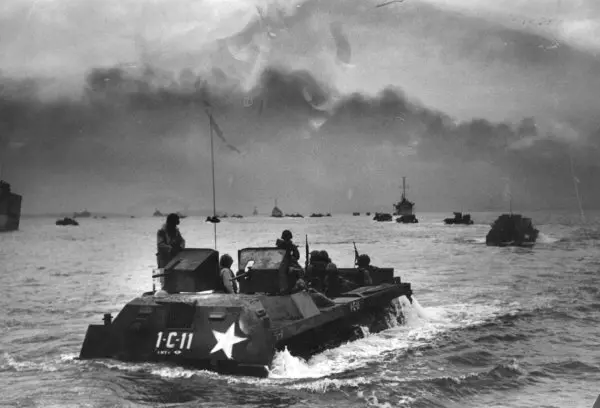Bert Hardy (1913-1995) is a name synonymous with mid-century British photography. He is best known for capturing British life in the immediate post-war era. However, his photography extends to a much broader timeframe to share the essence of a changing world, from the interwar years to the start of the Swinging Sixties.
Exploring Bert Hardy's collection with Dr Tom Allbeson at Cardiff University
Here are five aspects of Bert Hardy's life and career that make him a standout figure – not only contributing to the heyday of photojournalism but also as a versatile, international and entrepreneurial image-maker.
1. Working-class beginnings
Born in 1913 into a working-class family in Blackfriars, London, Hardy's journey into photography began when leaving school in 1927, he found work as a lab assistant at the Central Photographic Service.
Hardy started by photographing family and friends in his neighbourhood, but his first taste of commercial success came with a photograph of King George and Queen Mary during the Silver Jubilee in 1935, marking the beginning of a remarkable career.
2. Master of sports photography
Hardy's professional journey began with sports photography, where he showcased his talent in capturing dynamic moments in various sports. His collaboration with The Bicycle magazine staff photographer George Moore introduced him to the agility of the 35mm Leica camera, enabling him to excel in low-light conditions and immortalise the energy of sporting events.
Hardy learned a lot about photography in the early 1930s. As he recalled in his autobiography Bert Hardy: My Life (1985), “the importance of quick reactions in getting a good shot, and a willingness to experiment technically, and an appreciation of what can be done in the darkroom to bring out the best in a picture taken in less than perfect conditions.”
3. Picture Post and social documentation
Hardy documented people in a range of cities and contexts. From the first photograph of his siblings taken at bathtime in the family’s one-room flat on Webber Street, Hardy had a keen eye for the everyday lives and living conditions of working-class families.
Hardy became a staff photographer for Britain’s leading photo-magazine Picture Post in 1940. His work with the publication showed a skill for documenting diverse communities and social issues, both in the UK and across the globe. His photo-essays became instrumental in shaping the visual narrative of the mid-twentieth century.
Tom Hopkinson (editor of Picture Post, 1940-50) described Hardy as, “The nearest to an all-round cameraman I ever worked with. There were few assignments – except perhaps theatre and ballet – on which I wouldn’t have wished to send him.”
4. War photography and a global perspective
Called up to the Army in 1942, Hardy served as a sergeant in the Army Film and Photographic Unit (AFPU) during World War II, documenting critical moments from the battle for Normandy to the Bergen-Belsen Concentration Camp after liberation.
Following the Second World War, Hardy photographed divided Germany after the start of the Cold War in 1947, the Greek Civil War (1948) and the Korean War (1950) – including reportage of the Inchon landings. Tom Hopkinson (Picture Post editor, 1940-50) considered the latter as possibly the best photo-story he ever received.
His global perspective extended to conflicts associated with the end of the British Empire, including Malaya (1948), Kenya (1954), Cyprus (1956), and in Yemen (1957) highlighting the harsh realities of a changing world.
5. Advertising innovator and lasting legacy
Hard-working, resourceful and imaginative, Hardy was constantly taking and making opportunities to build a remarkable photographic career. Following the closure of Picture Post, Hardy embraced a new career chapter in advertising and brand identity. His innovative use of the 35mm camera and a story-telling approach injected a fresh and candid look into advertising photography. He won commissions from brands such as BP, Cunard, Esso, Heineken, Kellogg’s, KLM, Lucozade, Nestle, Nivea, Oxo, and many more.
Retiring in 1965, Bert Hardy's legacy endures as an influential figure in photojournalism, reminding us of the power of the lens to transcend time and tell compelling stories.
Bert Hardy: Photojournalism in War and Peace shines a fresh light on the career and legacy of British photographer Bert Hardy, see it now at The Photographers’ Gallery until 2 June 2024.








